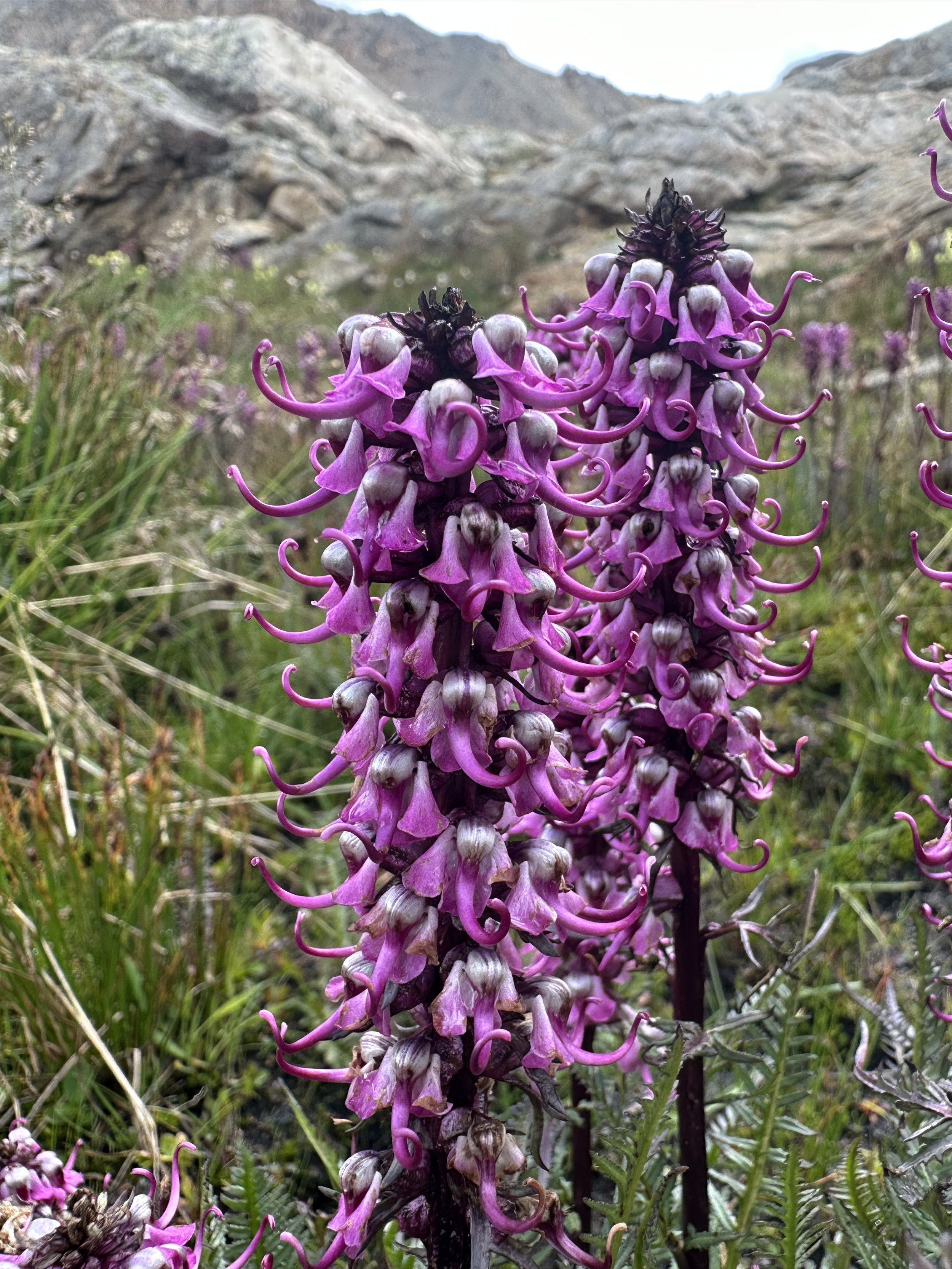Fish food, toilet paper, and self-service all in one
Verbascum thapsus, July 24, 2023
Common & scientific name
Woolly mullein, Verbascum thapsus
Family
Evening primrose, Onograceae
Location
Roadside, 9,800’
Fun, weird, helpful, or little known fact
I always thought this roadside weed was good for emergency toilet paper and that was about it.
Alas, the wonderfully rich and detailed USFS Fire Effects Information System taught me otherwise: “Common mullein was likely introduced to the eastern United States more than 230 years ago. Before the Revolutionary War, common mullein seeds were brought and cultivated by early settlers for the easy collection of fish. . . .
Given a seed source and a canopy opening, common mullein is a potential inhabitant of nearly any vegetation or community type. . . .
Self and cross pollination of common mullein flowers are both possible. If by the end of the day an open flower has not been visited by a pollinator, it is self pollinated ("delayed selfing”).”
Cool beans!


































